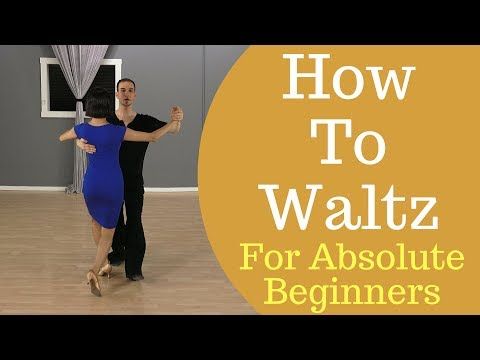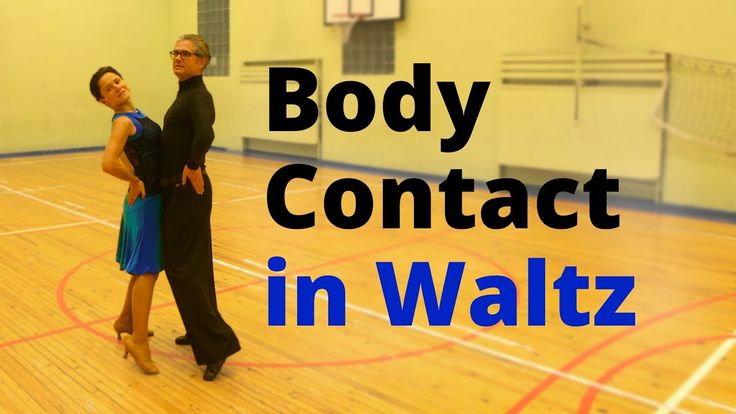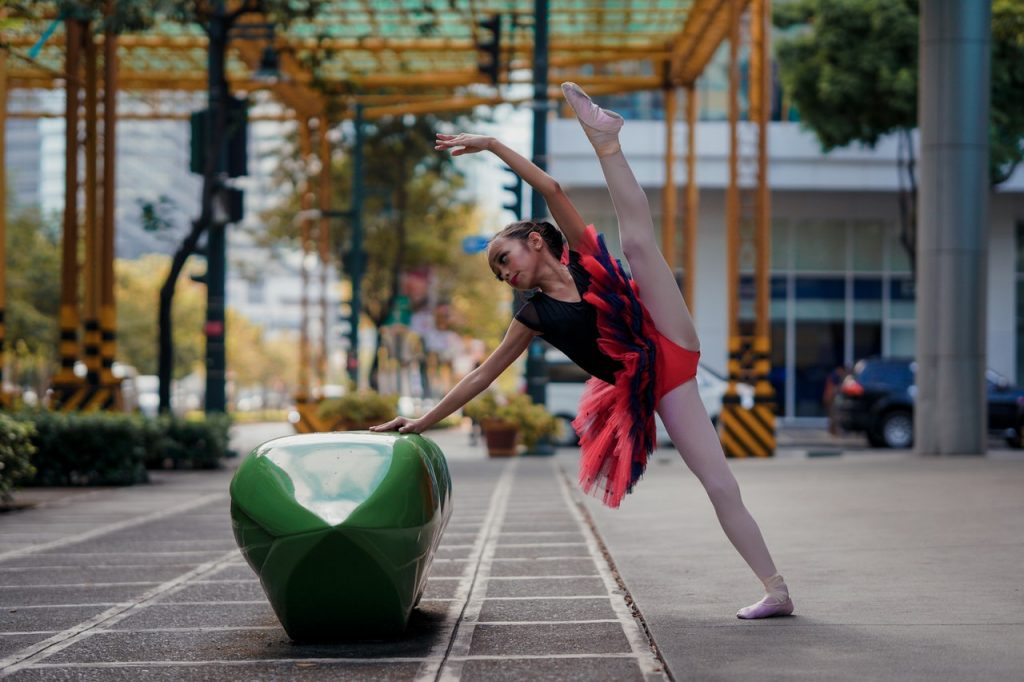How to dance slow waltz
Learn Basic Steps For Waltz
Waltz is an elegant, nearly universal dance, perfect for weddings, or almost any social occasion. It's not as hard to learn as most people think.
- Basic steps
- Instructions & Diagrams
- Video
- Recommended Video Lessons »
Quick intro
Waltz dates back to the late 17th century Europe, but has never really been out of fashion and clearly stood the test of time. It should probably be one of the first ballroom dances you learn.
It is a smooth and graceful dance with long, flowing movements, characterized by rise & fall motion. It has a unique 3/4 timing and a simple rhythmic pattern which blends with the music. You can start waltzing very quickly by just learning the simple box step.
Basic steps
The basic step for waltz is a box step. It's named after a pattern it creates on the floor (box or square) and forms the foundation of the dance.
A box step can be divided into two parts - a forward half box and a backward half box. Each half box has three steps - a step forward or backward, a step to the side, and a step to close the feet together.
The leader starts with the left foot and executes a forward half box, followed by a backward half box. The follower performs the opposite – she starts with the right foot and executes a backward half box, followed by a forward half box.
The basic box step pattern uses three counts - slow, quick, quick, which is repeated twice to create the box step. Timing is 1,2,3,1,2,3 or 1,2,3,4,5,6.
Instructions & Diagrams:
When dancing waltz someone has to lead and someone has to follow. Usually the man will lead and the woman will follow.
Men's Steps:
- Step forward with the left foot
- Right foot step sideways to the right
- Bring your left foot next to your right foot
- Step back with the right foot
- Step back sideways with the left foot
- Bring your right foot next to your left foot
Lady's Steps:
- Step back with the right foot
- Left foot step sideways to the left
- Bring your right foot next to your left foot
- Step forward with the left foot
- Step forward sideways with the right foot
- Bring your left foot next to your right foot
Video
In this video Leon and Kim will show you the basic box step. You will also get important tips on rise & fall movement which characterizes this dance:
You will also get important tips on rise & fall movement which characterizes this dance:
more videos »
Once you've mastered the basic box step, it's time to start rotating that box. It will usually be rotated to the left (counterclockwise), so it's called the Left Box Turn. It's quite simple: with each half box, you turn 1/4 of the turn to the left. After two boxes (or four half boxes) you will complete the turn and end up where you began. Then start all over again.
Ok, so now that you know the basic box and how to rotate it, lets continue with basic progressive. Here, as the name implies, the leader will always be moving forwards and the follower backwards. This will enable you to move around the dance floor instead of just dancing on the spot. Here is a clip from Learn & Master Ballroom Dance course that will show you in detail how it's done:
Where to go next?
Now that you know the basics, what's your next step (pun intended ;)? To go to the next level, we recommend one of the video training programs. Here are our recommendations »
Video: Learn to Dance the Slow Waltz
The Waltz represents the most classic of all the ballroom dances, dating back to the 1700s. In this comprehensive 2-hour program, you'll learn how to dance the modern Waltz, also referred to as the Slow Waltz.
People are familiar with the idea of Waltz, so it is normal for first-time students to think the Waltz is easy. In fact, it represents some interesting challenges because it turns often and requires the partners to change feet after every three steps. But don't worry! George and Wendy take you through the same program they have used to successfully teach hundreds of couples in live group classes.
You'll learn how to follow the music, important details about posture and Waltz movement, the Hesitation, the Left Foot Box, Right Foot Box, and how to turn the Box. You'll see how to dance a beautiful figure from the American Smooth syllabus called the Lady's Underarm Turn, along with a nice variation that can add light and shade to your dancing. You'll learn how to apply a technique known as Rise and Fall to make your dancing look more polished. Then we show you how to combine the left foot box and left turns with the right foot box and right turns to move around the room. We finish off by guiding you through an advanced technique that empowers you to create twice as much movement along the floor with only one small change to your technique.
You'll see how to dance a beautiful figure from the American Smooth syllabus called the Lady's Underarm Turn, along with a nice variation that can add light and shade to your dancing. You'll learn how to apply a technique known as Rise and Fall to make your dancing look more polished. Then we show you how to combine the left foot box and left turns with the right foot box and right turns to move around the room. We finish off by guiding you through an advanced technique that empowers you to create twice as much movement along the floor with only one small change to your technique.
Curriculum
This course totals more than two hours in length, but is divided into nine parts to make it easy for you to learn in a proven step-by-step process.
Part 1: Introduction (length 19:04)
In this lesson we cover the background and music of Waltz, proper posture and dance hold to get you started on the right foot.
Part 2: The Box Step (length 13:20)
This lesson covers the Left Foot Box Step in detail. Although this is a very basic figure, you'll learn a number of things to watch for to help you avoid developing bad habits.
Although this is a very basic figure, you'll learn a number of things to watch for to help you avoid developing bad habits.
Part 3: The Hesitation (length 7:35)
The Hesitation is a pause in the movement to create visual light and shade in your dancing.
Part 4: Turning the Left Foot Box (length 14:36)
In this lesson we show you how to turn the Box Step. Although the box is actually very easy and you've likely mastered it by now, people get into all kinds of trouble when they try turning it. We give you valuable tips to help you avoid these issues.
Part 5: The Lady’s Underarm Turn (length 22:14)
This is a beautiful figure from the American Smooth syllabus. We show you this step as well as a nice variation that combines a series of steps to give you a dynamic option when you're dancing.
Part 6: The Right Foot Box (length 12:46)
This lesson covers the Right Foot Box. In addition to helping you avoid common problems, we also show you how to turn this figure. While it is similar to the Left Foot version in technique, turning this version of the Box is more challenging because of the position of the partners.
While it is similar to the Left Foot version in technique, turning this version of the Box is more challenging because of the position of the partners.
Part 7: Moving Around the Room (length 14:36)
In this lesson we show you how you can combine the Left Foot Box and left turns with the Right Foot Box and right turns to dance around the room. You learn a sequence that's used by dancers at all skill levels.
Part 8: Waltz Rise and Fall (length 11:13)
We advance your skills in the Waltz by showing you a technique known as Rise and Fall, to make your dancing look more polished.
Part 9: How to Move More (length 8:34)
Ramping up your skill to another level, we show you how to double the amount of movement along the floor by making only one minor change in how you apply the sequence we showed you earlier. This is the same technique used by the world's top dancers.
Want to know what the program looks like before you commit? Watch a brief 3-minute free preview from the Part 1 video.
Limited-time special offer!
Members-Only Content
This content is available to Delta Dance members only. Membership grants you access to special content, our members-only videos, and downloadable choreography and technical guides. You may cancel at any time.
Click here to register or login below with your membership credentials.
Dance Slow Waltz
Slow Waltz is a dance from the European ballroom dance program. At competitions, as a rule, it is performed first of all dances. The tempo of music for the slow waltz does not exceed 30 beats per minute, and this dance is measured and fluid in character. The musical measure of the waltz consists of three counts ("one", "two" and "three"), the musical time signature is ¾. The main emphasis in the music of the slow waltz falls on "one", and the most active movement of a pair of dancers falls on the count of "two". The movements of the slow waltz are smooth and are distinguished by soft plasticity and curved lines.
The movements of the slow waltz are smooth and are distinguished by soft plasticity and curved lines.
Origin
Slow waltz performance requires a hall (at least 25 sqm) with parquet or laminate flooring. The line of dance runs in a circle on the sides of the hall counterclockwise. When performing a composition, couples with a high level of skill perform complex choreography, go to the center of the hall and sometimes move against the line of dance.
The slow waltz was formed in its modern form around the turn of the 19th and 20th centuries. Initially, waltz music was fast and did not suit the needs of the dancers. Not all visitors to salons and dance clubs were able to dance at a fast pace. Over time, composers began to compose music at a much slower pace, and the dance movements of the waltz became more leisurely and smooth. So there was a slow waltz (Slow Waltz).
In Russia, the slow waltz became popular in the 1930s. Dancing was then considered an exemplary form of leisure for Soviet citizens.
In the slow waltz, as in any other dance of the European program, partners dance opposite each other with a shift of half a body, the partner is at the right side of the partner. The contact in the pair is the tightest in the lower part of the body, in the upper part of the body the partners create volume in the pair by stretching the body and head to the left side. When performing a slow waltz, the dancers lower themselves to the count of three, create a dynamic movement on the count of one, and raise their feet and knees on the count of two. Performing a slow waltz at a difficult level of skill requires the dancer to have plastique, a sense of balance, and good coordination.
The slow waltz is spectacular and easy to understand for a person not experienced in ballroom dancing. The dramaturgy of the dance is solemnly tragic or romantic.
Slow waltz is a good choice for a wedding dance or for any special occasion such as a prom. The slow (English) waltz differs from the Viennese waltz in the pace of performance, when there are fewer musical measures per minute of time, so this dance is softer and not so fast.
The slow waltz is characterized by a restrained manner of performance. Calmness and slowness only decorate this dance, making it even more refined. The slow pace is very harmoniously combined with the smooth waltz movements and body tilts of the dancers. The overall dance pattern appears to be slightly diagonally directed, with the dancing couples constantly descending and ascending. This effect, combined with the smooth movements of the dancers, gives the impression that the performers are swimming. This illusion is especially enhanced when the slow waltz is performed by professional dancers.
Style: social, ballroom
Meter: 3/4
Tempo: 84 - 90 bpm or 28 - 30 beats per minute
Main Rhythm: 123 123 (heavy emphasis on 1)
Music Style: Slow Ballads or 3/4 instrumental
list of allowed figures, sorted by class
0040
Slow waltz, E-class
| NO P/n | English name | |||
1. | RF Closed Change (Natural to Reverse) (Closed Change on RF [4]) | 0063 | ||
| 2. | LF Closed Change (Reverse to Natural) (Closed Change on LF [4]) | Closed change from LN (from left turn to right) | Right turn | HOWARD |
| 4. | Reverse Turn | Left Turn|||
| 5. | 9005 Whisk0005 ( TELEMARK ) | HOWARD | ||
| 19. | Open Telemark (Telemark To PP [4]) 9000 | 9005 (Telemark in PP) 9000 9005 HOWDS20. | Closed Impetus Turn (*) (IMPETUS [4]) | Closed Impetus rotation ( Impetus ) |
| 21. | 9. 9. 9. .0055 Open IMPETUS Turn (*) (IMPETUS To PP [4])Open Impetus rotation (Impetus in PP) | HOWARD | 22. | CROSS HESITATION FROMITION (CROSS HESITITIN ]) | Cross Heziteishn (Cross Heziteishn from PP) | HOWARD |
| 23. | Wing (Wing from PP [4]) 9000 | Wing (9000 9000 | ||
| 37. | Passing Natural Turn (as amended [1]) | Crowning right turn from PP | ) (see note) | Open right turn (as amended [4]) |
| 39. | Running Finish | Running ending | ||











